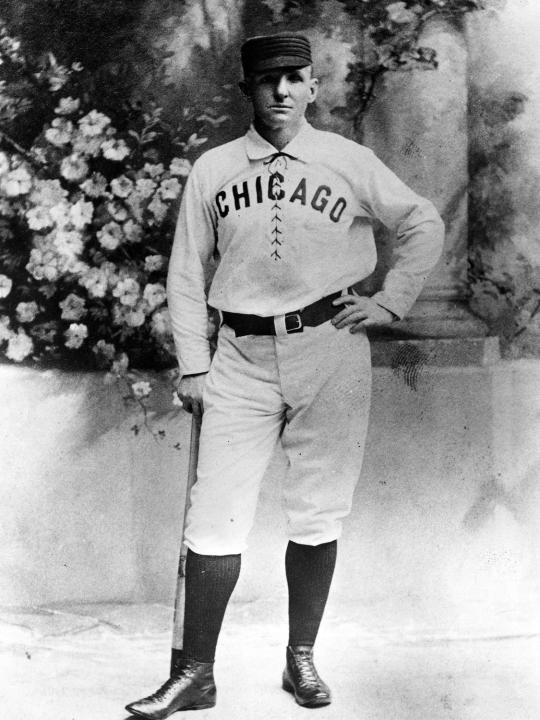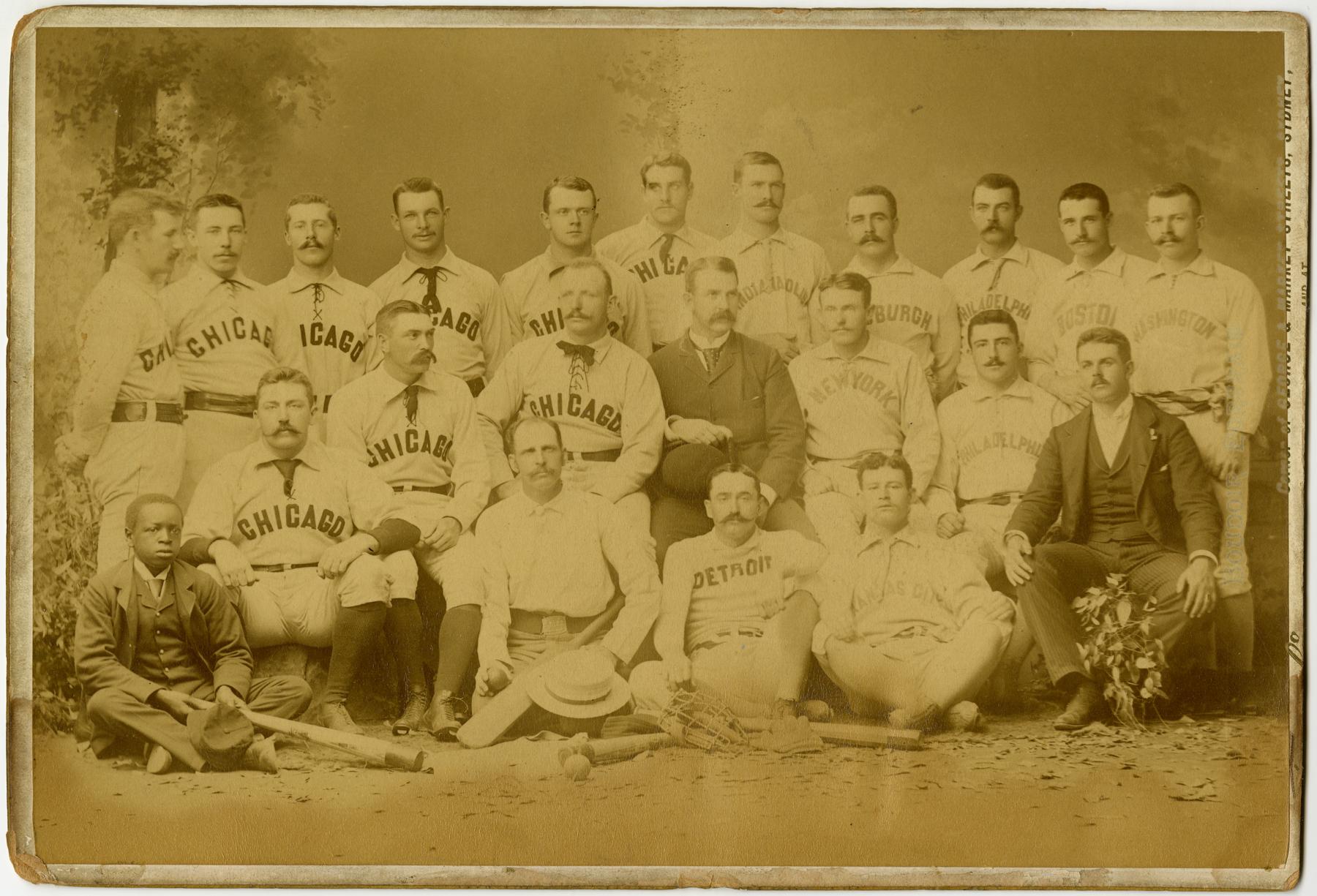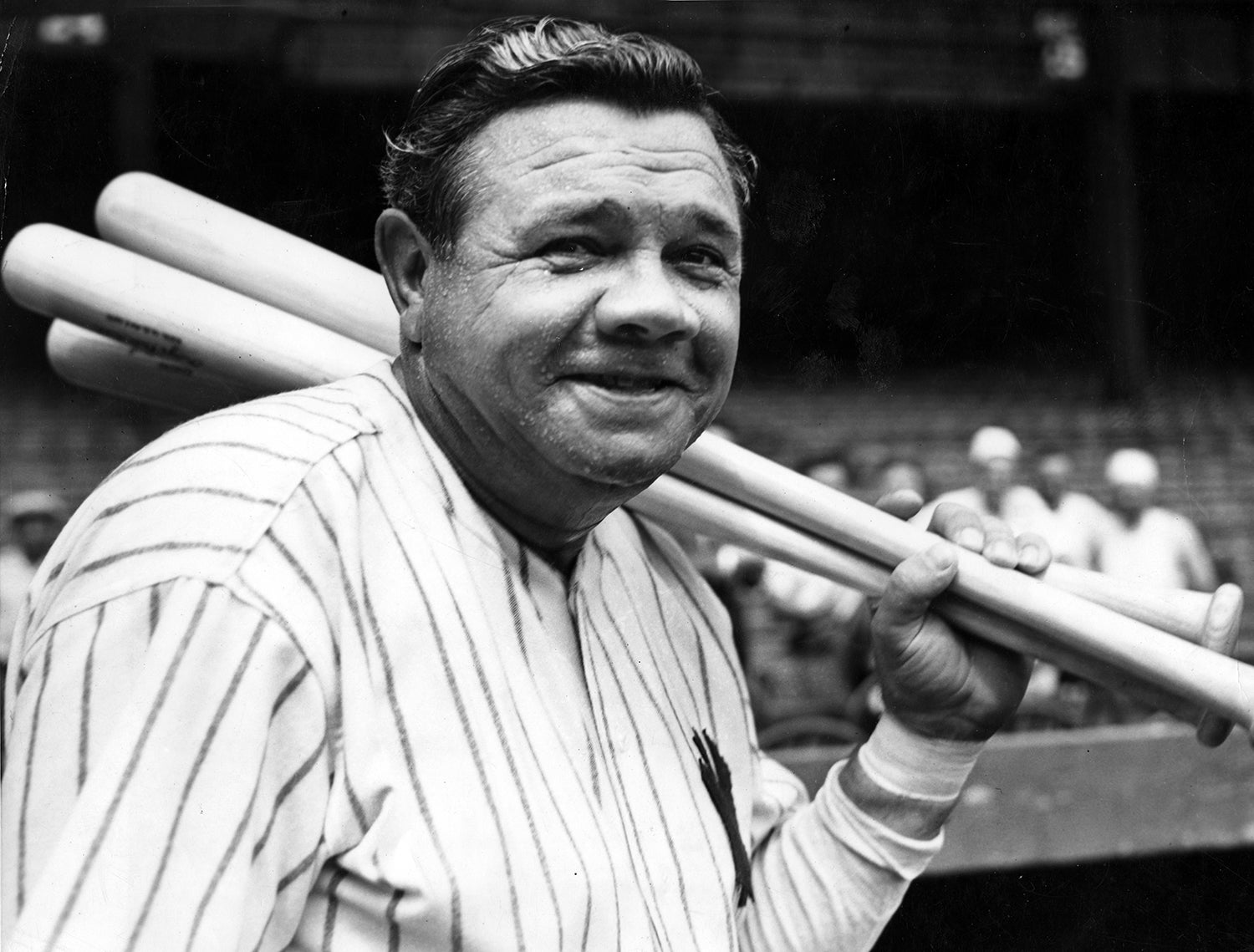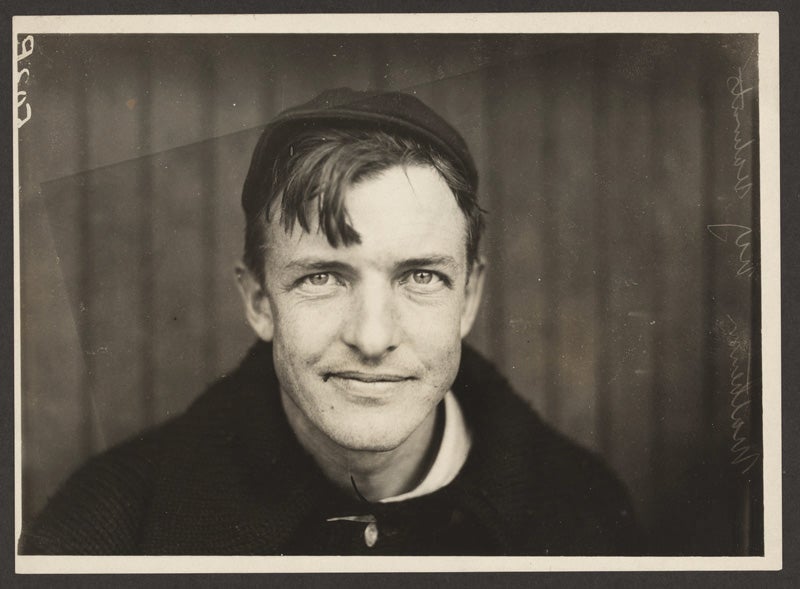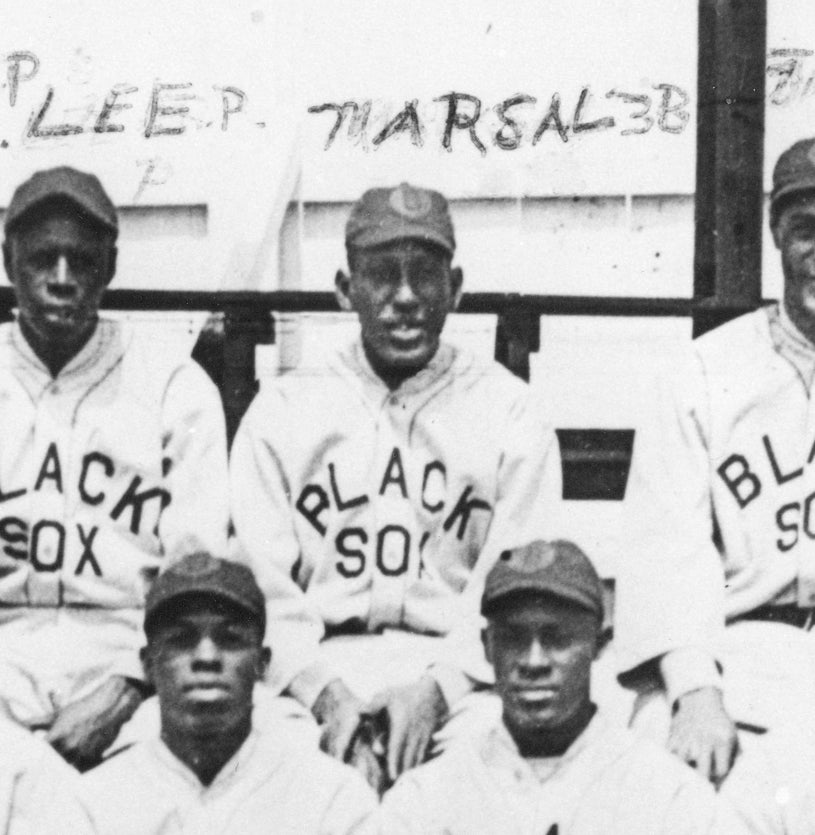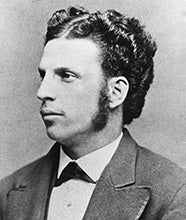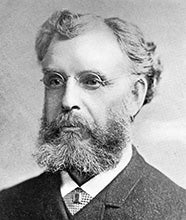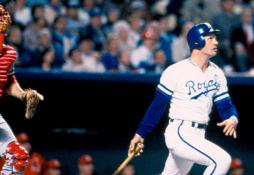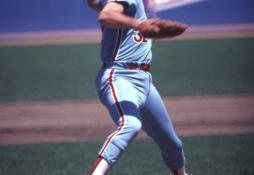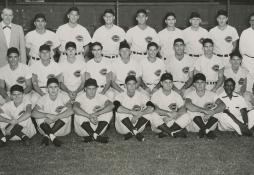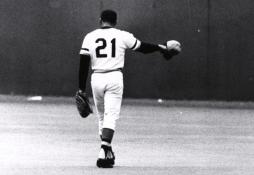- Home
- Our Stories
- Every picture tells a story
Every picture tells a story
Image from 1888-89 tour from Museum collection contains remarkable history
The ever-growing digital collections now available at Hall of Fame’s PASTIME online collection are a treasure trove for the casual baseball fan as well as the seasoned baseball historian. The Hall of Fame’s release of newly digitized materials related to a number of baseball world tours provides the online visitor with interesting, entertaining, and often surprising insights into the history of the game.
Consider this photograph of a ball-playing entourage that traveled overseas in the offseason of 1888-89. Organized by pitcher-turned-sporting goods mogul Albert Spalding (in dark suit at center), the tour was originally intended to make stops in Hawaii (at the time called the Sandwich Islands), New Zealand, and Australia before returning to the States. But a change in plans had the group continue westward, making stops in such diverse locations as Sri Lanka (then known as Ceylon), Egypt, Italy, France, and the British Isles.
It was in Australia that members of Spalding’s Chicago White Stockings (the franchise known today as the Cubs) visited the Tuttle and Company studio to pose with their globe-trotting opponents, a team dubbed the “All-Americas” and consisting of star players from other major and minor league ball clubs.
Thanks to the Hall of Fame’s high-quality scan of this stunning photograph, zooming in on various details of this team photo reveals a number of hidden and rarely told stories. Here are just a few:
Uniform threads
The player standing at far right is Jimmy Manning, a 26-year-old light-hitting outfielder who, despite the lettering across his chest, never played for a Washington baseball club. Still, the uniform Manning wears is an excellent example of that which was donned by each member of the All-Americas: White jerseys and pants, blue stockings, and a silk American flag that served as a belt. The outfit had been designed by Helen Dauvray, a celebrated theater actress and the then-wife of John M. Ward, the star shortstop of the New York Giants and the appointed captain of the “All-Americas.” Ward can be seen sitting just to the right of Spalding.
Hall of Fame Membership
There is no simpler, and more essential, way to demonstrate your support than to sign on as a Museum Member.
Capping it off
To the left of Spalding sits the captain of the White Stockings and arguably the greatest baseball player of the 19th century, Adrian “Cap” Anson. How dominant was Anson? Well, at the time the photo was taken, no big leaguer had collected more hits or played more games than the veteran first baseman. And when he retired following the 1897 season, Anson was at the top of the career lists in games played, hits, doubles, and runs scored.
The Wright stuff
At Anson’s feet is George Wright, the celebrated shortstop of the 1869 Cincinnati Red Stockings. Wright had last played professional baseball in the early 1880s and was hired to umpire baseball games during the tour. But since Spalding arranged to play a number of cricket matches during the excursion, Wright also served as a cricket coach, teaching the players the finer points of baseball’s sporting cousin. In fact, Wright is the only person to have played both first-class cricket and Major League Baseball, a remarkable feat that is likely to never be matched. Note that Wright has a cricket bat in his lap and his pants are secured with a cricket-themed belt buckle, a prized possession commemorating the 1859 team that staged England’s first overseas cricket tour. Though George was just 12 at the time, Wright’s brother Harry and father Sam both played against that much-celebrated team during its visit to the States.
Spalding’s World Tourists in Australia, December of 1888. Front row from left to right: Clarence Duval (mascot), George Wright (with cricket bat), Ned Hanlon (Detroit), and Billy Earle (Kansas City). Middle row: Ned Williamson (Chicago), Fred Pfeffer (Chicago), Cap Anson (Chicago), Albert G. Spalding, John M. Ward (New York), Jim Fogarty (Philadelphia), and Harry Simpson, assistant to Spalding. Back row: Tom Burns (Chicago), Tom Daly (Chicago), Bob Pettit (Chicago), Marty Sullivan (Chicago), Mark Baldwin (Chicago), John Tener (Chicago), John Healy (Indianapolis), Fred Carroll (Pittsburgh), George Wood (Philadelphia), Tom Brown (Boston) and Jimmy Manning (Washington). The standard team photo reveals more than the participants, however, like the unique eight-sided bat in front of Earle. (National Baseball Hall of Fame)
Bat man
Just below Spalding sits Detroit center fielder Ned Hanlon, who followed his stellar playing career with a successful stint as a big league manager, piloting Baltimore and Brooklyn to a total of five National League pennants. Each member of the quintet at the center of this photograph — Spalding, Ward, Anson, Wright and Hanlon — ultimately earned induction into the Baseball Hall of Fame.
Seen scattered in front of Ned Hanlon’s feet are various pieces of equipment: a cap, ball, catcher’s mask, glove, and pair of baseball bats. The bat on the left, as well as the bat held by tour mascot Clarence Duvall at the very far left of the photo, are Spalding black-tipped “Wagon Tongue” bats, first introduced by the sporting goods manufacturer in early 1888.
But, more remarkably, close examination of the bat on the right reveals it to be quite an unusual specimen. For most of baseball history, the rules of the game called for the bat to be round. But starting in 1885, bat regulations stated that “a portion of the surface may be flat on one side.” The odd provision, introduced in an effort to cut down on foul balls, ultimately failed and by 1893 had been dropped from the rule book. But the bat seen in the photograph is flattened on multiple sides, illegal even under the short-lived flat-bat rule.
In the October 10, 1888, issue of The Sporting Life, baseball writer Bob Larner explained the idea behind his new-fangled invention:
After giving much thought to the subject I believe that an octagonal bat of 23/4 inches in diameter and otherwise comparing in length, etc., to the requirements of the rules, will enable a batsman to hit the ball with greater certainty and drive It in a desired direction more frequently than when the regulation round, tapering bat is used. ... Mr. Spalding, to whom I explained my idea and furnished him a rudely-constructed model, proposes to experiment with the octagonal bat during the Australian trip. He will have a number of these bats constructed in his own manufactory, and the members of the Chicago and All American teams will give them a practical test.
Beyond this brief mention and the previously unnoticed appearance of the bat in the team photograph, nothing is known about the trial of the eight-sided bat.
Tom Shieber is the Senior Curator at the National Baseball Hall of Fame and Museum
As the Hall of Fame continues to make more of its unparalleled collection available online, you can be sure that more and more intriguing stories of baseball’s storied past will come to light. We’ll share these discoveries with you, and encourage you to do the same. If you find a hidden gem in our online collections, we’d love to hear about it. Please tell us about your discovery by contacting us at info@baseballhall.org or by reaching out on Twitter @baseballhall.

